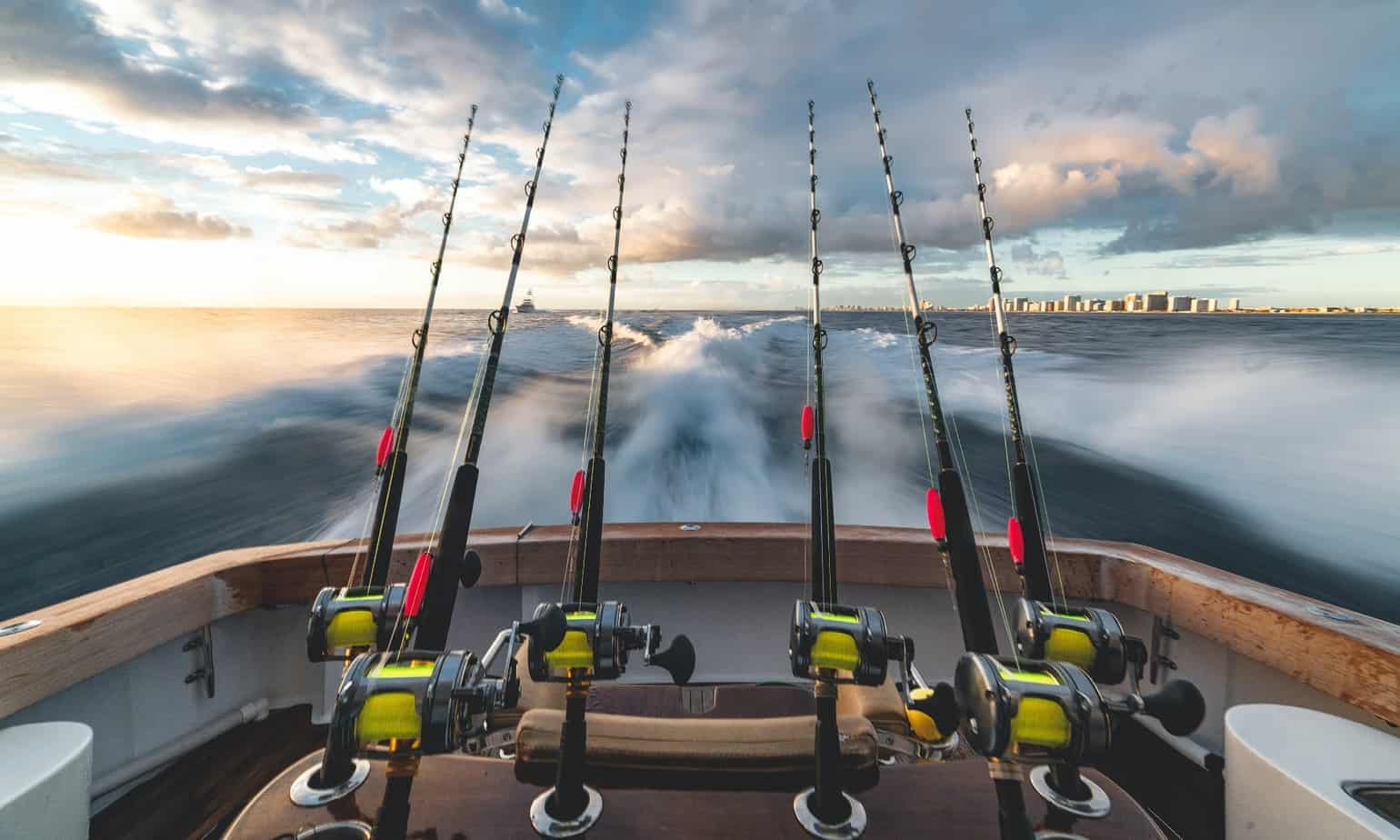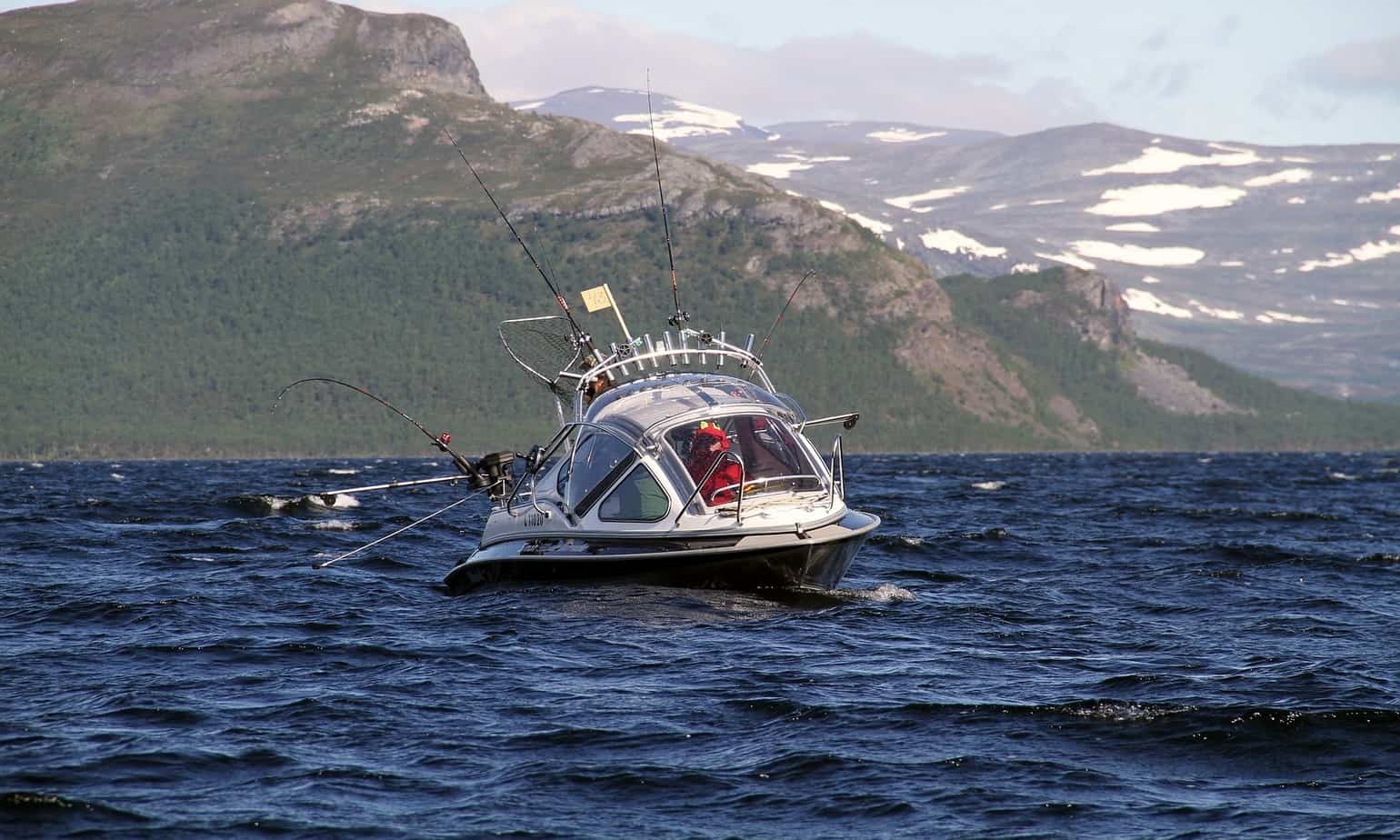Trolling is a type of fishing method in which baited lures are pulled behind a moving boat to catch fish. It’s considered to be one of the most popular fishing techniques due to its effective way of luring and catching fish.
I’m personally loving trolling! Instead of sitting on a still boat for hours on end, waiting for a fish to bite, you get to explore the sea and enjoy the scenery it holds. And you get to bring home a full cooler of fish!
Trolling for fish requires its own equipment, but what if all you have are standard spinning reels? Can you use a spinning reel for trolling as an alternative?
By the way, as an Amazon Associate, I earn when buying qualified products through links on my site.
You can use a spinning reel for trolling as long as the reel and rod meets criteria that can withstand the rigors of trolling, including 50lb line weight support and at least 20lbs of drag as well as several other factors.
So, the answer is yes! But before you go trolling, there are several factors you need to consider.

Advantages of Trolling
The main concept of trolling is to trick fish into thinking that your bait is moving prey. As such, the speed in which you move your boat solely depends on the nature, habitat, and size of the sought fish.
But we can’t just throw it into the sea and call it a day! Trolling is more than just dragging lines through water, after all.
Just like targeting any prey, you’ll need to carefully pick the right time of day, depth, and use the proper fishing gear to consistently catch fish while trolling.
It might sound complicated, but it’s much easier than you think.
Before we proceed, here are some of the advantages of trolling:
- Allows you to locate fish by covering a lot of ground in a rapid manner
- Provides precise depth and speed control
- Ideal for those who are uncomfortable with typical cast-and-retrieve techniques
- Maximizes accuracy when casting lure
Equipment You Need When Trolling for Fish
Today’s spinners can stand up to heated runs and drag pressure more than they were capable of a few decades ago. So yes, you can use a spinning reel for trolling!
But despite that, you first need to make sure you’re using the right spinning reel.
Getting the Right Spinning Reel
Before you go trolling with your spinning wheel, you must ensure it has some features. Some of these include:
- Can hold at least 400 yards and a 50-pound test braided line
- Able to apply 20 pounds of drag without difficulties
- Has a smooth retrieval even with heavier fish
- Built with high-quality stainless steel parts, so it doesn’t rust after several offshore trolling trips
- The Roller bearing need to be well-oiled to reduce friction during a run
- Powerful enough to drag struggling fish through moving water
Two examples of such spinning reels are the Shimano Stella Saltwater and the Daiwa Saltist Spinning Reel.


However, keep in mind that spinning reels aren’t generally as powerful as reels specifically made for trolling. Even with these requirements, you may find it challenging to use your spinning reel compared to the alternative.

This is primarily because you can’t pre-set spinning reels to specific increments. If you do, there’s a high chance that the catch’s sudden pressure will break the line.
To prevent this, it’s best to set your spinning reel to half-pressure and only adjust it to its full fighting level once you’ve caught a fish.
I know how difficult it is to adjust the reel while battling fish, especially if it’s incredibly rough. Therefore, you may need to practice beforehand to perfect the art of catching fish using a spinning wheel while trolling.
Furthermore, spinning reels typically aren’t made with “lugs” or metal rings that allow you to strap it into a harness like what you do in trolling reels. Because of this, you’ll need to put a bit of elbow grease when pulling the fish you caught to your boat.
You’ll also need to worry about your reel getting tangled or twisted while dragging your fish in. It’s an inconvenience that you can avoid if you’re using the right reel for the job.
So if you hook up a nice sized sailfish, tuna, or marlin, you’re going to wish you had a reel that’s more substantial and isn’t as difficult to use.
Getting the Right Rod
Although you can use any reel for trolling, your rod’s length and strength are non-negotiable.
Your rod should be short and stiff because it’s easier to handle and control when fishing.
Trolling a lure places a near-constant tension between the rod and the line. Therefore, a long, whippy rod won’t immediately allow you to feel the vibration coming from a caught fish.
A short, stiff rod will also jerk away from a snag much quicker if you encounter, for instance, a stump or a log. So rather than allowing it to twist and tangle, the rod will simply snap in place.
As long as you’re using a rod that’s powerful enough to withstand the pressure of moving water, there’s little to no chance of it snapping, unlike long rods.
Remember, the longer the rod, the longer the bend. And we don’t want our rods to bend while trolling.
Finally, this type of rod will allow you to reel in the fish from its school much quicker without spooking the rest of the group. Thus, giving you the opportunity to catch more fish from the same school.
Here are some tips when choosing the right rod:
- Use a rod that’s no longer than 9 feet.
- Search for a reasonably stiff rod that can withstand the impact of a big fish’s escape
- Opt for rods with roller guides; they’re ideal for larger species of freshwater and saltwater fish

Tips to Help You Catch More Fish While Trolling
Although trolling sounds simple, it does take a bit of skill, coordination, and practice. Other than equipping yourself with the right gear, here are some quick tips to follow.
Plan Ahead
Before you start trolling, it’s essential to have a plan. It’s best to study a map and/or get an aerial photograph of the place you’re planning to troll, identify a route, and stick to it while fishing.
Make Use of Electronic Fishing Devices
The best weapon besides your eyes when trolling is a good fish finder such as the Garmin ECHOMAP.
As its name suggests, fish finders allow you to track and find schools of fish underneath the water. This is extremely useful in identifying which depths hold the most fish, thus increasing your chance to go home with a large haul.
Continue Moving
Once you hook a fish, don’t stop your boat! Instead, kick it into neutral. No matter what, keep your boat moving forward and fight the fish you caught while moving.
Baby Steps
This advice is specifically directed to those who are planning to go trolling for the first time. Don’t compare yourself to trolling professionals who catch over five tuna in under an hour, especially when you’re still learning.
We recommend to start with three lines; one on each side, and the other out in your boat’s back.
Once you’re comfortable with the lines you cast, you can begin to add a more complex setup. Three lines are certainly better than having ten that are tangled continuously.
Conclusion
Can you use a spinning reel for trolling?
Yes, but it isn’t the ideal reel for trolling. This isn’t to say that you shouldn’t, though. As long as you have the right skills and a reel that can stand up to the catch, go for it!
After all, success depends on how you approach the sport. The higher your skill level, the greater your chances are at being successful.
